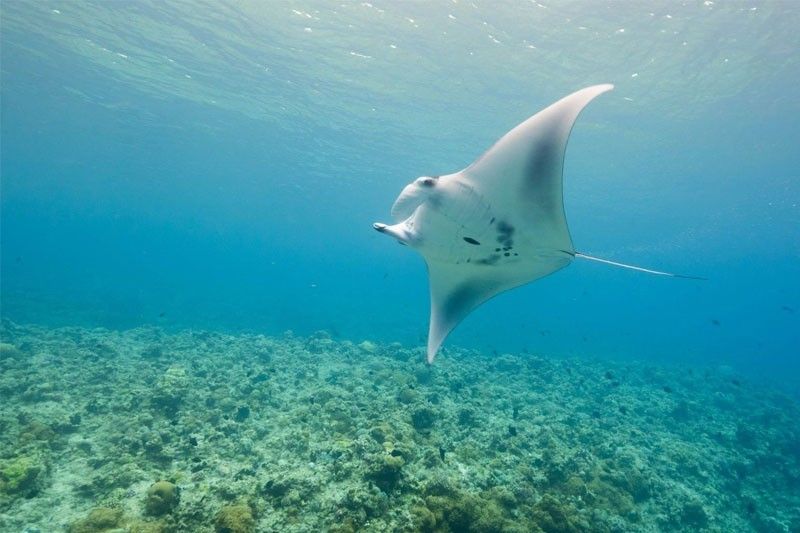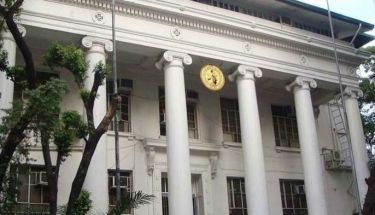Tubbataha bacteria has antibiotic, anti-cancer potentials

MANILA, Philippines — Filipino scientists have discovered marine bacteria in sediments of Tubbataha Reef in the Sulu Sea that can be developed into powerful antibiotics and anti-cancer compounds, the Department of Science and Technology (DOST) revealed.
The DOST said its research team in Iloilo City’s University of San Agustin (USA), led by three “Balik Scientists,” uncovered the marine bacteria’s potential at the Tubbataha Reefs Natural Park, which the United Nations Educational, Scientific and Cultural Organization had declared a World Heritage Site.
The marine bacteria touted to contain antibacterial and anti-cancer properties has been named S (Streptomyces) tubbatahanensis, after the place where it was discovered, home to 1,200 marine species and one of the Philippines’ oldest and most well-protected marine ecosystems.
Leading the research team were incumbent balik scientist, Dr. Emmanuel Lorenzo de los Santos, and former United States-based scientist-couple Dr. Jonel Saludes and Dr. Doralyn Dalisay.
Balik scientists refer to Filipinos who left the country and acquired knowledge and expertise abroad, then bring that back with them to serve under the auspices of the DOST and partner institutions.
The DOST revealed that the successful research team was also composed of Chuckris Tenebro, Dana Joanne Trono, Lex Aliko Balida, Leah Katrine Bayog, Julyanna Bruna, Edna Sabido and Dion Paul Caspe.
Their research paper on S. tubbatahanensis has been published last month in an international scientific journal, the Microbiology Spectrum of the American Society for Microbiology.
The research article, titled “Synergy between Genome Mining, Metabolomics, and Bioinformatics Uncovers Antibacterial Chlorinated Carbazole Alkaloids and Their Biosynthetic Gene Cluster from Streptomyces tubbatahanensis sp. nov., a Novel Actinomycete isolated from Sulu Sea, Philippines,” said that the “specialized metabolites” of the newly “uncovered” marine bacteria have already been profiled using mass spectrometry and nuclear magnetic resonance analyses followed by antibacterial, anticancer and toxicity screening.
“By integrating bioinformatics-driven genome mining and metabolomics, we unearthed the hidden biosynthetic richness and mined the associated chemical entities from the novel Streptomyces species,” the researchers said in their published research article.
“The bioprospecting of novel Streptomyces species from marine sediments of underexplored ecological niches serves as an important source of antibiotic and anticancer drug leads with unique chemical scaffolds,” the researchers noted of their discovery.
The DOST, which has steadily poured research and development funds into USA to build its capability to house cutting-edge drug discovery research, hailed the achievement of the university’s researchers.
“The emergence of drug-resistant pathogens and spread of these superbugs is a global concern,” said DOST Undersecretary for R&D Leah Buendia. “DOST invests in studies to find novel sources of bioactive compounds found in the Philippine waters in which capabilities on drug discovery and development have yet to be explored. Through R&D, we open opportunities to Filipinos for better health, safety, and the easy and affordable access to new antibiotics.”
The DOST has tapped their Grants-In-Aid funds to support USA’s establishment of their Tuklas Lunas NMR (Nuclear magnetic resonance) Laboratory Visayas at the Center for Natural Drug Discovery; Mass Spectrometry Imaging Laboratory at the Center for Chemical Biology and Biotechnology (C2B2); Center for Advance New Materials Engineering and Emerging Technologies, and the Center for Informatics.
The USA is also the only biobank in the country with more than 3,000 samples of good bacteria collected under efforts led by Saludes and Dalisay with other researchers and scientists. These have all been harvested from different parts of the Philippines with the goal of developing locally sourced and developed antibiotics.
In April 2019, Dalisay, who graduated cum laude from the USA with a degree in pharmacy, gave a presentation at the National R&D Conference at the PICC in Manila, where she stressed the need for scientists and researchers to undertake research and drug discovery on the biodiversity riches in the country.
She noted that breakthrough antibiotic erythromycin was found in the marine soil off Iloilo City in 1949.
Dalisay, who earned her Master of Science in Biology at the University of the Philippines-Visayas, doctorate in Microbiology at University of New South Wales in Australia and a post-doctorate fellowship to specialize on marine natural products chemistry at the University of California, San Diego, returned to the Philippines along with her husband as part of the DOST’s Balik Scientist program in June 2015 to establish a research program on natural products drug discovery at the USA-C2B2, and had decided to stay and head the C2B2 and lead the R&D work on marine sediments in her alma mater.
- Latest
- Trending





























